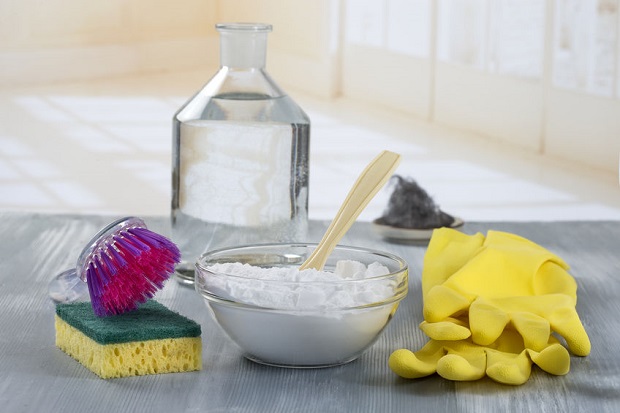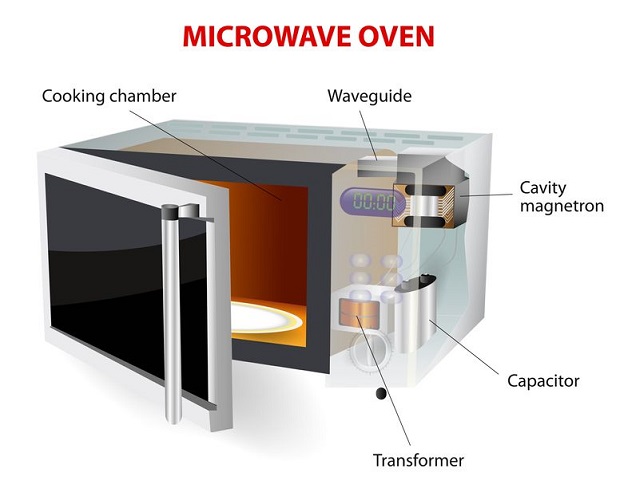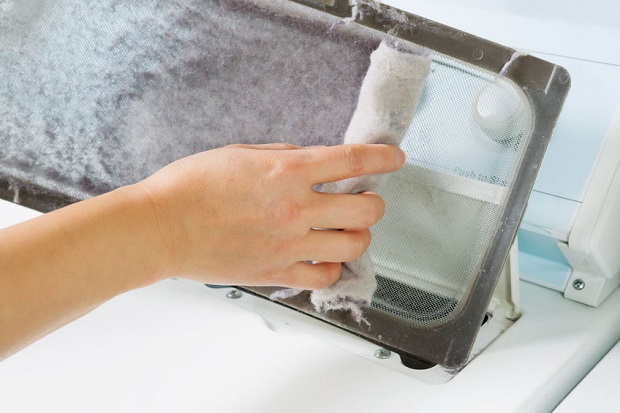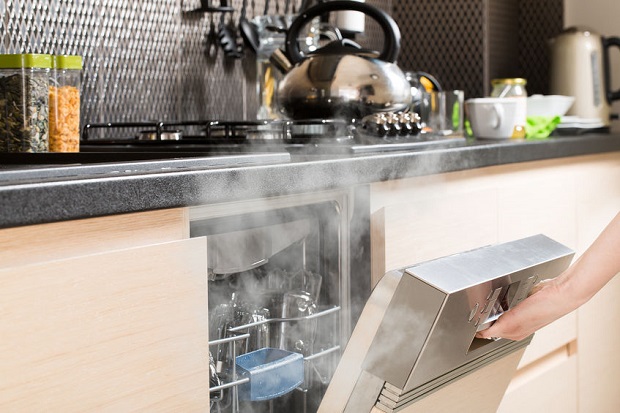
The grinding action of a garbage disposal/food waste disposer often leaves food remnants on the walls of the unit, which, when they build up over time, will begin to smell. If you have a garbage disposal or food waste disposer, you must keep it clean to prevent unpleasant odors from taking over your kitchen. Even if you already have an odor problem, caustic cleaners are unnecessary. Most homes already have products on hand that will effectively resolve the issue.
Mild Cleaning
The easiest way to clean a garbage disposal is to put the stopper in the sink and fill the sink halfway with warm water and 1/4 cup of baking soda. Next, turn on the unit and remove the stopper. This will create a whirlpool action and flush food particles that may be clinging to the sides of the disposal walls down the drain. Turn on the cold water for a minute or so after the warm water has drained to finish flushing everything clear. ((KitchenAid – “How to Clean Your KitchenAid Food Disposer to Remove Odor.”))
Baking Soda and Vinegar Solution
If you have an odor problem that isn’t resolved with baking soda and water, try pouring 1/2 cup of baking soda into the disposal unit. Let it sit for about 30 seconds, then add an equal amount of white vinegar. You may want to insert the stopper in both sinks while the solution is bubbling. When the fizzing action dies down, flush the system with a medium-sized pan or teakettle full of boiling water. Follow up by running cold water through the disposal while it is operating to wash everything out of the drain. ((Cottis, Halle. Natural Solutions for Cleaning & Wellness: Health Remedies and Green Cleaning Solutions Without Toxins Or Chemicals. United States, Page Street Publishing, 2017.))
Don’t Forget the Splash Guard/Shield/Baffle
The folks at Waste King advise that most odors emanate from food build-up on the splash guard, which is the rubber insert covering the mouth of the garbage disposal/food waste disposer and is also called the shield or baffle, depending on the manufacturer. The splash guard prevents water from splashing when the unit is running and keeps food particles inside the unit. ((Waste King – “Frequently Asked Questions – Can I Clean My Disposal to Remove Odor?“))
To clean the splash guard, turn your disposal off. Next, use a scouring pad with baking soda and warm water to wipe the underside. Finally, let warm water run to rinse it off. Never stick your hand inside the appliance. ((Waste King – “Frequently Asked Questions – Can I Clean My Disposal to Remove Odor?“)) Some units have splash guards that are easily removable for cleaning, such as the InSinkErator Evolution Series®.
Preventing Odors
The folks over at Insinkerator, a leading garbage disposal/food waste disposers manufacturer, recommend running citrus rinds through the unit, such as lemons and limes, with a handful of ice cubes. Repeat once per week or whenever the appliance needs freshening up. ((Insinkerator – How Do I Clean My Food Waste Disposer?))
The KitchenAid folks remind users only to run cold water with their disposers and allow water to run for at least 15 seconds after grinding is complete. ((KitchenAid – “How to Clean Your KitchenAid Food Disposer to Remove Odor.”))
Expert Opinion

“Acetic acid is the acid in clear white vinegar and is a natural all-purpose cleaning agent. It is best for general household cleaning on surfaces that can tolerate a strong, acidic product. Vinegar removes hard water deposits from glassware, rust stains from sinks, and tarnish from brass and copper. . . Although vinegar is widely used as a disinfectant in household cleaning, the packaging cannot claim the product as a disinfectant because it is not registered with the EPA.”
New Mexico State University Cooperative Extension Service – Selections and Use for Home Cleaning Products
“Some environmental groups advocate “environmentally safe” products as alternatives to commercial germicides in the home-care setting. These alternatives (e.g., ammonia, baking soda, vinegar, Borax, liquid detergent) are not registered with EPA and should not be used for disinfecting because they are ineffective against S. aureus. Borax, baking soda, and detergents also are ineffective against Salmonella Typhi and E.coli; however, undiluted vinegar and ammonia are effective against S. Typhi and E.coli 53, 332, 333. Common commercial disinfectants designed for home use also are effective against selected antibiotic-resistant bacteria .”
Center for Disease Control – Guidelines for Disinfection and Sterilization in Healthcare Facilities, 2008



